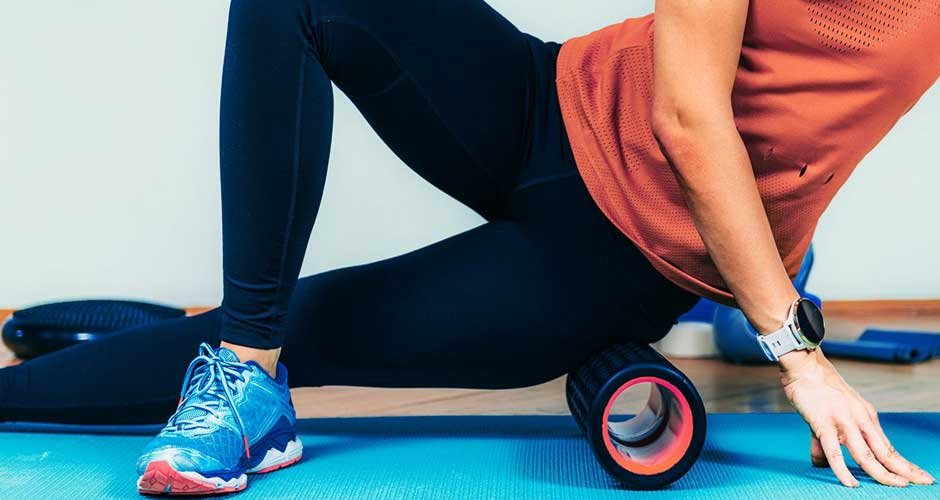If you love lifting weights and pumping muscles, you should know how painful it can be.
Well, letting your muscles rest, keeping yourself hydrated, and taking heat and cold therapy are some of the possible treatments for your muscle gym. Moreover, painkillers and consistent use of red light therapy can also be an effective muscle pain relief method.
So, want to know more about these treatments? If yes, then binge on till the end of the blog.
Contents
Why Your Muscles Get Sore in the First Place?
Muscle soreness is quite common after exercises and it can also result in damage to your muscle tissue according to ACSM (American College of Sports Medicine).
When this damage or even micro-tearing takes place, your body starts the repair process simply by triggering inflammation in your body’s injured places.
Having extra fluid in your muscles puts extra pressure on areas that have already been damaged.
This is what causes the tightness and pain that you usually feel 12 to 24 hours afterward. Even though all exercise does certain damage, some types of workout are known to do even more damage and, as a result, make it sore.
In particular, if you do a new workout that is comparatively more intense than your normal routine, your muscles are likely to get hurt and sore more.
Possible Treatments for Muscle Pain After Your Gym Sessions
In this section, we’ve listed all the possible treatments you can take for your muscle pain. Read on till the end of the section.
Let Your Muscles to Rest
Let your hurt muscles rest and heal. Therefore, getting enough rest is crucial for healing as it helps your damaged muscle fibers heal and makes you feel less sore.
However, don’t push yourself too hard, and always give your body sufficient time to heal.
Keep Yourself Hydrated
Ensure you stay hydrated and eat a healthy, well-balanced diet full of essential nutrients.
Staying hydrated aids muscles in getting rid of metabolic waste, and a healthy, balanced diet gives muscles the building blocks they need to heal.
To help your body heal, binging on a balanced diet and nutrients is also recommended.
Heat and Ice Therapy
Ice and heat therapy has been one of the most common treatment methods for sore muscles for ages.
These ice packs or heat bags even reduce swelling and numbness to quite an extent. However, these therapy types need to be consistent and can take time to heal your soreness after gym completely.
Painkillers and Anti-inflammatory Drugs
Nonsteroidal anti-inflammatory drugs can help ease your muscle pain and reduce swelling.
However, it’s best to use such drugs with caution and with the help of a medical professional, since overdose may result in side effects.
Foam Rolling and Massage
To ease sore muscles, get a gentle massage or use a foam roller. Massage can help your muscles relax and give a good blood flow.
Self-myofascial release a.k.a foam rolling, can help loosen up tight muscles and make it easier to move your joints.
Staying Active and Doing Light Exercise
As part of your active recovery, do some light, low-impact exercises every day. Walking, swimming, or even riding a bike can help get more blood to the muscles. This can help them heal without adding to your stress.
Consult a Professional
Get help from a medical professional, like a physiotherapist or sports medicine specialist, if the pain doesn’t go away or is very bad.
They can give you personalized advice and treatments, such as therapeutic exercises or other actions that are made to fit your needs.
How Red Light Therapy Helps Muscle Pain After Gym?
Here in this section, we’ll let you know how red light therapy aids muscle pain after your gym sessions.
Reducing Inflammation
It has been proven that red light therapy reduces inflammation, which could mean less inflammation in muscles.
Plus, it may even help ease muscle pain and soreness after a workout by changing how the body reacts to inflammation.
Better Cell Recovery
Red light therapy is thought to make cells work harder, especially the mitochondria. This higher cellular metabolism can speed up the healing of damaged muscle tissue, which can help you recover faster and feel less pain after working out.
Better Blood Flow
The therapy has been shown to improve blood flow by activating nitric oxide production. More oxygen and nutrients get to the muscles when blood flow is better, which also helps get rid of waste. This better circulation helps the body heal and may lessen muscle pain.
Lessening Oxidative Stress
Red light therapy may help lower oxidative stress in muscle cells because it has antioxidant properties. By reducing oxidative damage, the therapy may help people recover faster and feel less pain in their muscles after doing a lot of hard physical activity.
More Endorphins Regenerate
Rlt may help the body make more endorphins, which are natural painkillers and mood boosters. This can make you feel good and might make you feel less pain in your muscles after working out.
Bottom Line
In a nutshell, addressing muscle pain after gym sessions is crucial for optimal fitness and well-being. Implementing effective treatments ensures a faster recovery and supports continued exercise.
Rest and proper hydration remain fundamental, while therapies such as red light therapy offer promising avenues for reducing inflammation and promoting cellular recovery.
Combining all these mentioned treatments with proper diet and consultation can give you the best muscle recovery.








